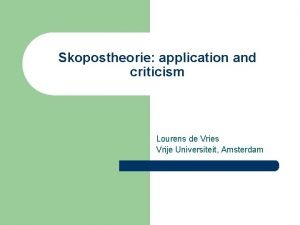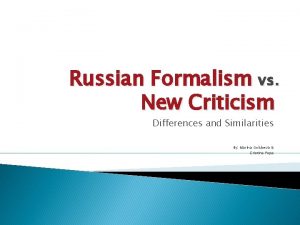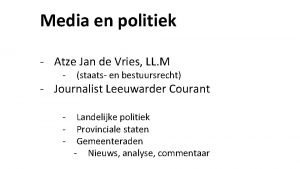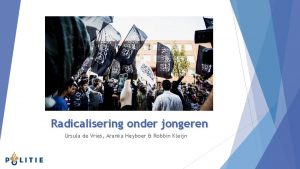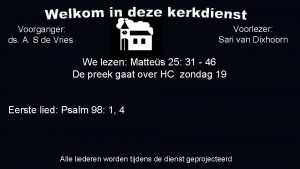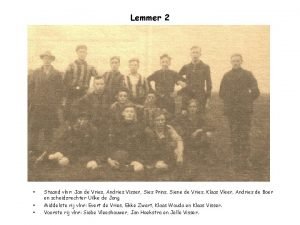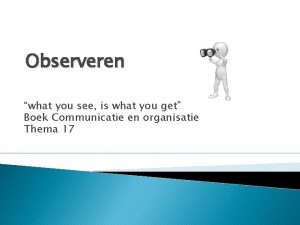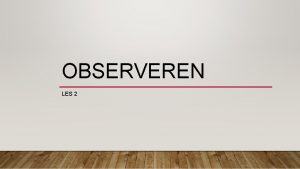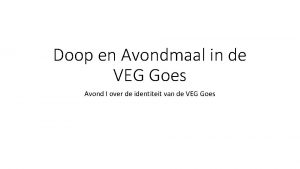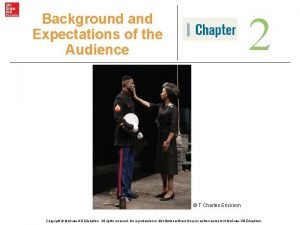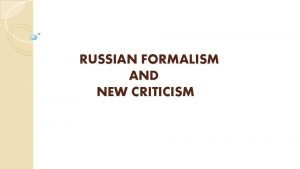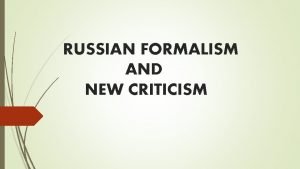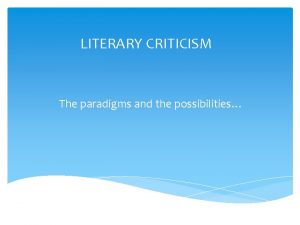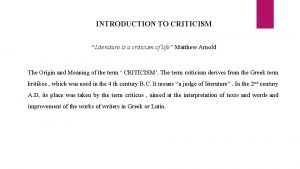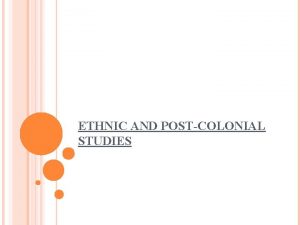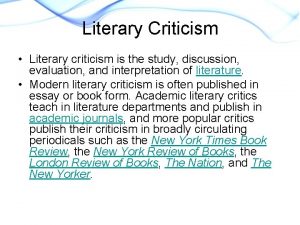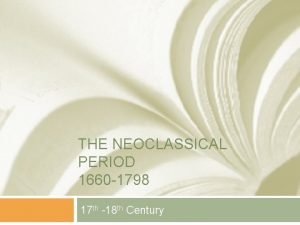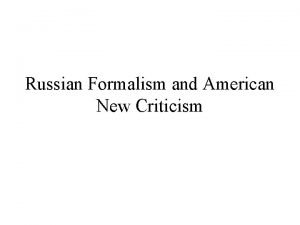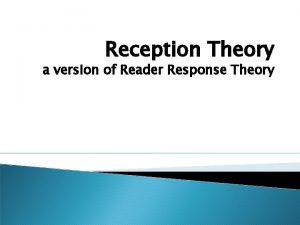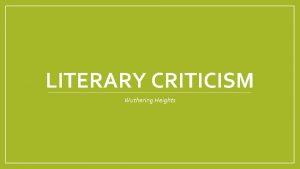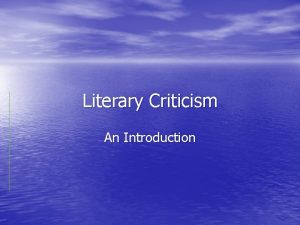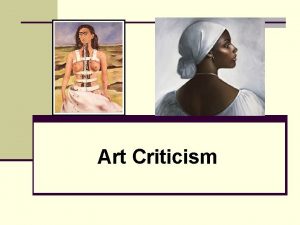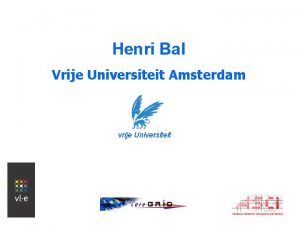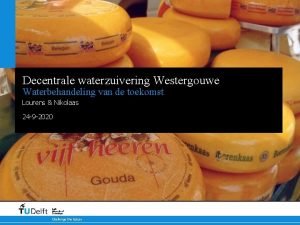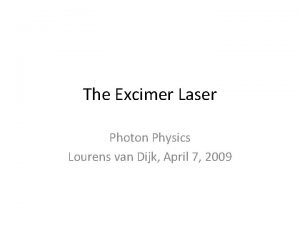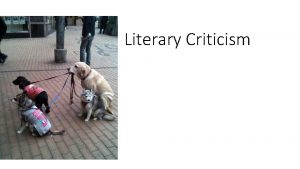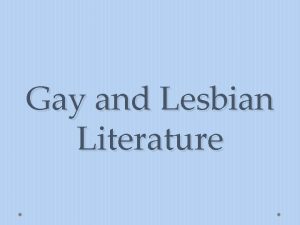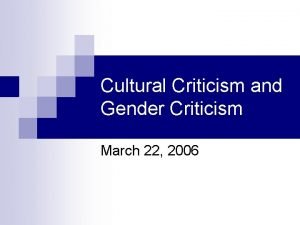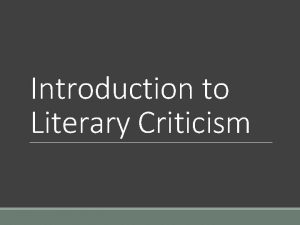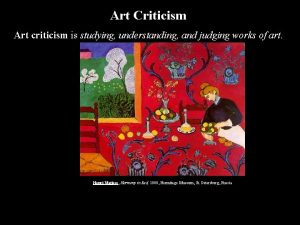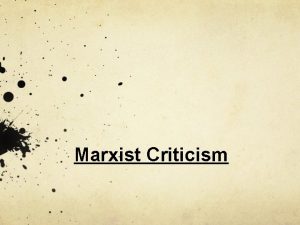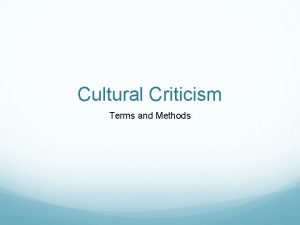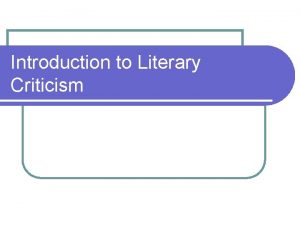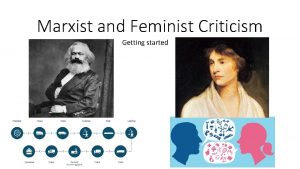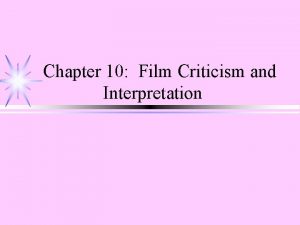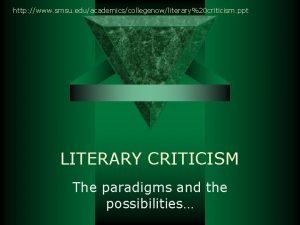Skopostheorie application and criticism Lourens de Vries Vrije





























- Slides: 29

Skopostheorie: application and criticism Lourens de Vries Vrije Universiteit, Amsterdam

l l l Translation practice as a decision making process Decision making in translation: Neglected but crucial aspect of empirical translation studies Remarkable exception: Levý 1967 “Translation as a decision process” “Actual translation work, however, is pragmatic; the translator resolves for that one of the possible solutions which promises a maximum of effect with a minimum of effort” (1967: 156) Translators and translation agencies and translator training needs to critically and eclectically select tools from the shop of Academia but never try to take over the shop of play the shopkeeper

Personal note l l My personal (eclectic) application of skopostheorie restricts application of skopos to the second phase of the translational decision-process, when the translator has already decided, using scholarly consensus as intersubjective criterion, which readings and renderings (s)he excludes After exclusion of rejected readings and renderings in first, negative, phase the translator is still left with too many acceptable readings and renderings, in other words in the process of going from pluralities to a single translation the input of source texts helps to eliminate ‘wrong’ renderings but there is still too much ‘good’ possible renderings and readings left; here, skopos becomes crucial, to help eliminate ‘good’ options and choose from among the good options those that suit the translation brief best

Core of skopos of Bible translations: theologies of Scripture, whether implicit or explicit l l l Remember (a) within skopostheorie it is communities of clients who control the skopos of the translator; what communities want to do with the Bible is NOT a matter for Academia (Translation Studies, Academic Theology, etc. ) (b) community traditions about Scripture: community theologies of Scripture, e. g. Evangelical theologies of Scripture versus Catholic or Orthodox Theologies of Scripture; community practices of Scriptures are deeply ‘theological’ basic assumptions about the Bible determine how the Bible functions in the various communities: theologies of Scriptures inform skopoi of BT Examples: inspiration doctrines, relationship Bible and Church Tradition, unity of Scriptures, Bible as liturgically and communally celebrated Word of God versus Bible as God’s message of salvation to individual reader, and so on Inspiration doctrines: differently construed relationships between God as Author and human authors

l l l Theological elements in skopoi explains why a certain linguistic (sub)type of Bible translation is chosen and also why translators seemingly deviate sometimes from that subtype (inconsistencies) Example: Buber’s German translation (very influential in Europe till today) Buber (first half 20 th century): extremely form-oriented, subtype: literalism also below word level (root concordance): e. g. in 1 Kings 12: 1 ( להמליך inf. constr. hifil, root: )מלך , ‘ihn zu königen’ in ungrammatical German (literally ‘to king him’) where Luther has grammatical German ‘um ihn zum König zu machen’ God as King key element in Buber’reading of Hebrew paradigm

l l l l Exodus 21: 24 ‘ajin tachat ‘ajin Luther is more literal (Auge um Auge, eye for eye) than Buber follows the rabbinical reading with his translation Augersatz für Auge, eye compensation for eye) that reflect the Jewish practice of paying compensation money to ‘replace’ the loss of the eye. Theological elements in Buber and Rosenzweig translation goals (skopos): Unity belief: one Voice speaks in all different books of Hebrew canon (Einheitsbewusstsein of bibelstiftende Bewusstsein, a unifying force operative before canonisation) In all humans there is an openness to the Voice that can be heard when the Scriptures are called out and that can reach those modern, sceptical humans in their Dasein in the temporal here-and-now listeners to the Schrift hear the repeated Leitworte, and this web of intertextual links leads to the Voice, the hidden meaning below the surface of the text, direct, without mediation of church or clergy or tradition Rabbinic reading traditions followed by Buber and Rosenzweig

Skopos of Bible translations l l Example Dutch Authorized Version 1637 Theological elements in its skopos: inspiration doctrine (literalism at word level) and perspicuity doctrine both equally strong and in extreme tension Problem solved by paratextual means: When a literal translation would lead to obscure Dutch, the translators could opt for a more free translation but should then give the literal translation in a marginal note as in the note to the translation with sijnen heyligen arm (with his holy arm) of Isa 52: 10 that says ‘Hebr. den arm sijner heyligheyt. D (=Dat is) sijne Goddelicke almachtigheyt, die hy in het verlossen sijnes volcx bewesen heeft. ’ Similarly, in Isa 52: 1 (ir haqoddes) the SV text chooses the free but clear translation heylige stadt (holy city) and gives the 'inspired' word order of the Hebrew in marginal note number 3, Hebr. ghy Stadt der heylichheydt (Hebr. you city of the holiness).

l l This is very different from the translation tradition of the Orthodox Churches in the East where the Sacred Inspiration is also present but not balanced by the Reformation idea of perspicuitas. There the Septuagintanisms and Hellenisms of the Slavonic translations and the resulting strangeness and otherness of the text are positively welcomed.

l l ‘Orthodox tradition views language as an intrinsically inadequate tool for comprehending the holy, and therefore as performing verbally a symbolic role analogous to that enacted visually by icons. Just as the icon makes no claim to be a photographic – or even essentially pictorial – depiction of the scene or event it represents, but rather a window onto the timeless reality to which it testifies and a mysterious means of mediating that reality to the worshipper, so the language of Scripture cannot be a series of logical propositions with a single intended meaning…The implications of this understanding of language for Bible translation are quite considerable. Since the way in which language relates to the realities described in the Bible is seen as a complex and mysterious process, an Orthodox approach would tend to maintain in some way the status of the text as a window onto another world by preserving a sense of the distance between the (modern) reader and the (ancient) text, and by marking in some way the inherent strangeness or otherness of that text. ’. S. Crisp, 'Icon of the Ineffable? An Orthodox View of Language and its Implications for Bible Translation'. Paper for the Triennial Translation Workshop of the United Bible Societies, Malaga 2000

Otherness or alterality as theological element in skopos of Bible Translations l l l Calvinist translations of 17 th century: strangeness or otherness of translation is undesired side-effect of necessity translate literally; literalism based on inspiration views; goal of translator: translation that literal because of inspiration AND understandable by audience (perspicuity theology, lay hermeneutics of Reformation), by using notes to soften undesired otherness and strangeness effect Otherness NOT a goal (not in skopos) Orthodox translations: otherness and alterity as translation goal Nida: 20 th century Evangelical Protestantism: perspicuity principle central in skopos, inspiration doctrine reinterpreted as inspired meanings-and-messages Skopos: always a mix of theological and other elements from historical situatedness: e. g. Dutch A. V. of 17 th century: national pride of having a translation NOT based on Luther’s German translation but our own Dutch-made Calvinistic translation

Otherness or alterality as secular, literary translation skopos l l l Foreigness as skopos may also derive from (Neo-)Romantic ideas of literary translation ( Schleiermacher, Venuti) to enhance the otherness and foreigness as part of a agenda of anti-domestication NOTE: again, whether secular (Venuti) or religious motivations (Orthodox views of Scripture) are behind such translation aims of alterity: it is up to communities and individuals in society what they want to do with Homerus, the Bible or Shakespeare; Venuti nor Nida nor anyone else should, from the point of view of skopostheorie, present his or her skopos or translation agenda as result of academic research; Translation Studies or Theory is neutral with respect to agendas of foreignisation/domestication, evangelization, literarization or any other ideological, religious or whatever agenda in society:

l l Nida’s missionary skopos that at the same time wants to reform traditional churches: “Non-Christians have priority over Christians. That is to say, the Scriptures must be intelligible to non-Christians, and if they are, they will also be intelligible to Christians. Not only is this principle important in making the Bible effective as an instrument of evangelism, but it is also necessary if the language of the church is to be kept from becoming an esoteric dialect- a symbol of belonging and identification or a semimagical means of imploring God”(Nida and Taber 1974: 32) Both Venuti’s alterity agenda and Nida’s naturalising agenda (closest natural equivalent) should be seen for what they are: they are not situated in Academia, not the result of a ‘science of translation’ of ‘translation studies’ but they emerge from theologically or ideologically informed skopoi

Biblical scholars, faith communities and translators l l l Translation as a process from pluralities to single translation decision The role of biblical scholars in the translation team is to present the pluralities and indeterminacies of the source text including the range of scholarly accepted readings of the text and to eliminate translation proposals that go against scholarly consensus. Scholarly consensus not as pseudo-objective norm but as changing, dynamic, global intersubjective norm that keeps the debate going (as in all normal science: the truth escapes us all the time but in a messy process of trial-and-error, refutation and confirmation, there is undeniable progress)

Biblical scholars, faith communities and translators l l l It is essential that biblical scholars understand the nature of the translation process as necessarily selective and as skopos-driven It is essential that biblical scholars accept theological elements in skopoi of Bible translations (e. g. Bible as message of salvation for unbelievers, Bible as ritual, celebratory carrier of denominational identity (e. g. Vulgate, KJV, etc. )); reading traditions of faith communities as guarded by ecclesiastical authorities The desired type of Bible translations cannot be dictated by biblical scholars as academics

Biblical scholars, faith communities and translators l l Faced with these pluralities, it is the role and noble burden of the translator, and also his or her specific skill, to choose on the basis of the function of the translation as formulated in the translation brief. The role of representatives of target communities is to monitor the progress of the translation from the perspective of the functions of the translation projects and of the perspective of loyalty to the writers of the source texts, to see whether the emerging translation indeed is the type of translation agreed on in the translation brief and whether the translation does not violate scholarly consensus on the exegesis of the source text.

Application of skopos on YHWH translation l l Translation problem: the tetragrammaton YHWH in the new Dutch Interconfessional Bible translation (NBV, 2004) Agreed skopos or functions: (1)interconfessional Church and liturgical function, the first Dutch Bible ever with an interconfessional skopos (2) literary and cultural function for secular audiences: intended to be able to function as the Bible for those who see the Bible as important work of Antiquity, and who want the translation to convey the various literary genres and styles found in the Bible as well as the cultural backgrounds of the texts, in short a literary and cultural function.

Role of biblical scholars in translation team l l l Role with respect YHWH problem: outlining the consensus, pluralities and uncertainties from a scholary perspective Puralities of proper vocalization and exegesis Scholarly consensus: (a) YHWH is first of all the proper name of the central character of the Hebrew Bible (b) name taboos affected the performing of the text in source communities leading to a separation of what was written (YHWH) from what was to be read aloud (Adonai) and that the avoidance replacement Adonai via its LXX translation kurios, and its daughter translations, came to function as a proper name in many translations and target communities

Scholarly input: a list l l l l a list of possible Dutch renderings was produced including: vocalised proper name; Dutch Jahweh or Jahwe (cf. major translations such as Dutch Willibrord Vertaling 1975 and Bible de Jérusalem 1961) four consonant ‘Dutch’ Tetragrammaton’: JHWH translate according to ‘meaning’; proposals Ík-ben-er’; ‘Hij-is-er’ transliterate the Qere: Adonai follow the common Jewish and Christian reading and translation tradition initiated in the LXX with κυρίοs (LORD, HEER[E]) options from Jewish reading traditions such as De Naam (the Name) or De Eeuwige (the Eternal)

Translators’ role l Translators combined the scholarly list of legimate options with the agreed functions and made the decision from puralities to a single skopos-driven choice from the scholarly acceptabe possibilities

Skopos considerations l l l In an interconfessional translation Jahwe(h) is no option because of the Jewish communities that the translation wanted to serve, apart from the uncertainty of vocalization. Seen from the perspective of the literary function of this Bible Jahwe(h) would be the best choice because it reflects the undeniable fact that it is first and foremost a proper name of the main character and should be translated as a proper name. Leaving out the vowels and give just JHWH was rejected by the translators because target communities would have no idea why the central character of the book would be identified with just 4 unpronouncable letters. Were these His initials or what? JHWH was to exoticizing for the broad interconfessional function of this Bible. Proposals to translate according to the meaning of the Tetragrammation were discussed but it turned out very hard to reach consensus on the meaning: over hundred proposals reached the Netherlands Bible Society and it became soon clear that the broad interconfessional function ruled out a translation of the meaning that satisfied only minorities of the target audience but estranged other segments. After this skopos-based elimation process the HEER (LORD) option was the only one left and that choice ended up in the translation.

Lessons from this example l l l Bible translations often have a composite skopos (multiple functions) Only niche translations for small audiences have a monofunctional skopos (e. g. A purely literary translation of the Bible that does not take church functions into account has a small niche function) In interconfessional Dutch translation anno 2004 it turns out ot be possible to find sufficient common ground, an intersection of both reading traditions and scholarly consensus

Lessons l l l With more functions: establish hierarchy of functions (e. g. Interconfessional function was no. 1 and literary function was no. 2 in Dutch NBV) In cases of clash of functions: hierarchy decides (e. g. Jahwe best option from literary perspective but impossible because of interconfessional function) Establish skopos beforehand; confirm it by test translations/pilots

lessons l l Make explicit what (literary, interconfessional, etc. )functions mean to stakeholders in project Example: literary function is ambigous term Literary translations can be both formoriented and precisely the opposite So, literary skopos is tricky unless it is spelled out what clients mean with ‘literary Bible’

lessons l l Literary function: further ambiguity Is the Hebrew, Aramaic and Greek Bible as a whole or partly “(High)Literature” and according to contemporary (Antiquity) standards or to ‘our’ 20 th century standards? Should we make Bible texts more polished, solemn and ‘literary’ than (some of )the original texts (e. g. Mark, Revelation) Should one “high” literary style be used throughout the translation (cf. Scheiermacher, Buber)?

lessons l l l Interconfessional skopos of Dutch NBV: Jews, Protestants, Catholics Problems: some Protestant stakeholders from denominations with a lot of knowlegde of the Bible, others much less so; this affects desired levels of explicitation Jewish partners want certain forms of intrusive paratext (pericope headings) in the margin of the page, out of respect for holy text, to clearly marginalize paratext and separate it from translated text

lessons l l Solution: various editions of same translated text with different paratexts for Jewish partners Literary skopos versus church skopos of NBV: literary paratext: no verse numbers, no pericope headings, no notes, no crossreferences; literary Bible translation should look like a translation of Homer Church skopos: paratext with pericope headings, verse numbers, cross-references Solution: separate literary editions with secular publisher of literature

Critique l l Skopos and typology of translations Documentary versus instrumental Seems to follow dichotomy of literal versus free that dominated Translation Theory ever since the German Romantics In ancient Rome and medieaval Europe: not so much literal versus free but tripartite division based on genres recognised in Roman rhetorics:

l l Skopostheorie: criticisms (1) subtypology does not realy help, ill-defined subtypes, a-historical; situatedness makes subtypologies superfluous (2) main distinction (documentary vs. instrumental): recycling of old 19 th century dichotomies?

l l Culture concept: cognitive systemic; Goodenough; cultures as mutually distinct (cf. Pym 1996: 338); outdated, unhelpful Nord (1997: 122) tries to mitigate the problem by talking about “rich points”of contact between cultures Creates false problem of position of translator (in TC, SC or interculture) Not empirical, more a metalanguage than a theory (as coherent set of testable hypothesis, empirical cycle)
 Lourens de vries
Lourens de vries Skopostheorie
Skopostheorie Constructive criticism vs criticism
Constructive criticism vs criticism Differentiate formalism from structuralism
Differentiate formalism from structuralism Atze de vries
Atze de vries Aranka de vries
Aranka de vries Rina de vries
Rina de vries Sari de vries
Sari de vries Jeroen de vries
Jeroen de vries Jan de vries grensrechter
Jan de vries grensrechter Lijst vrije beroepen 2020
Lijst vrije beroepen 2020 Paternoster magazijn
Paternoster magazijn Observatiedoelen
Observatiedoelen Intervalobservatie
Intervalobservatie Vrije observatie
Vrije observatie Observatieplan
Observatieplan Veggoes
Veggoes Bible verses about constructive criticism
Bible verses about constructive criticism Descriptive criticism vs prescriptive criticism
Descriptive criticism vs prescriptive criticism Formalism and new criticism example
Formalism and new criticism example Russian formalism and new criticism
Russian formalism and new criticism What is feminist criticism
What is feminist criticism Explain intrinsic and extrinsic approaches to criticism
Explain intrinsic and extrinsic approaches to criticism Ethnicity in postcolonialism
Ethnicity in postcolonialism Feldman theory of art criticism
Feldman theory of art criticism Hamartia examples
Hamartia examples New criticism vs formalism
New criticism vs formalism Neoclassical vs renaissance
Neoclassical vs renaissance Russian formalism vs new criticism
Russian formalism vs new criticism Reader reception
Reader reception
